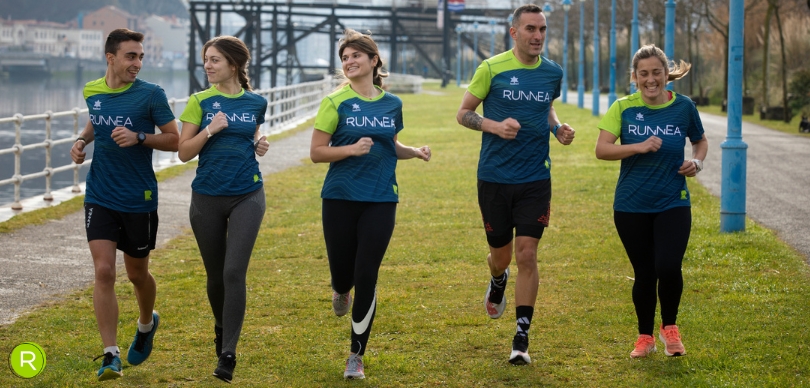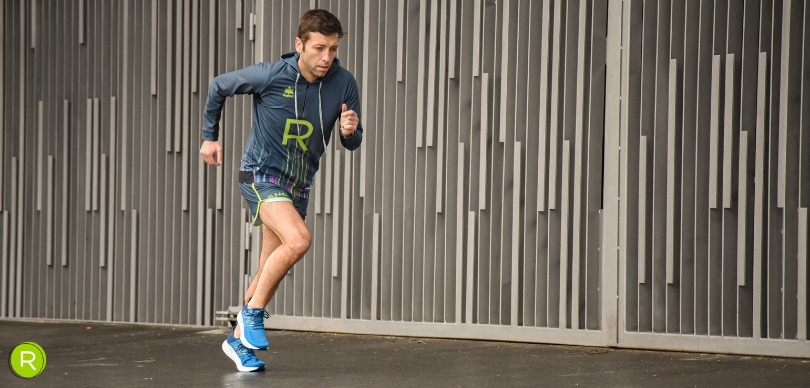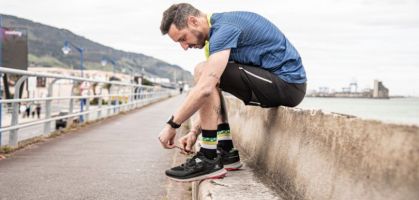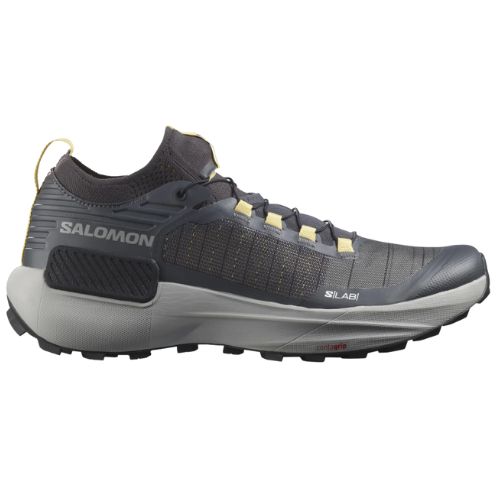If there's one thing that annoys us runners, it's the fact that we have a training session planned and we can't go out and train. Work, family or other commitments are often the cause of not being able to go running. Fortunately, these constraints are punctual and in most cases allow us to maintain consistency and regularity week after week.
But things change when, for whatever reason, we get injured. The fact of leaving aside, obligatorily, the running shoes is one of the most frustrating things and that takes the bulk of the amateur peloton. Injuries cause stoppages that can last for weeks or months, causing, in addition to the impotence of not being able to train, a decline in physical condition and, sometimes, the impossibility of participating in that competition or challenge that you had planned so carefully.
We think that injuries happen because of "bad luck" or some misfortune. It is true that in certain circumstances injuries are the result of bad luck, but it is even more true that most of the time they are avoidable events.
One of the aspects in which we pay less attention is, precisely, to the work of injury prevention, which does not consist exclusively of performing strengthening exercises. The control of training loads and planning are also two aspects that can directly influence the appearance of injuries in the runner. In other words, structured training adapted to the individual characteristics of each person will reduce the risk of injury.

8 tips to avoid running injuries
Knowing that the occurrence of injuries can have a multitude of causes, we have summarized all this in 8 tips to avoid, as far as possible, your running injuries. Don't lose any detail, runner!
Strength training
It may be the most obvious fact, but that's just the way it is. Strength training adapted to running guarantees a reduction in the occurrence of injuries, as well as improving our performance. In this sense, we must forget the old methodology of many repetitions and little weight and try to work with higher loads, either in the gym or with the material we have at home.
Program and analyze the volume of training
No more running aimlessly, not knowing how long or how far you are going to run. Recording and analyzing the number of hours spent training or the number of kilometers run per week will allow us to keep overtraining or occasional overexertion at bay, which can lead to injury. Following the principle of progressive increase of the loads, it will be very important to add more kilometers in a very controlled manner, while combining weeks of higher volume with weeks of lower volume to allow the body to recover and generate the desired adaptations.
Control the intensity
It is not only the distance we cover while training that counts. On many occasions what really matters is the intensity or level of effort we are making. If every time we go out to train we try to give our maximum, we will be overtaxing our body and generating a state of continuous fatigue, exponentially increasing the risk of injury. We must give much importance and presence to low intensity runs, as they will be the key to regenerate neuromuscular stress.

Plan your week
The weekly location of each type of training session takes on special relevance when it comes to preventing the appearance of injuries. Unless it is something punctual or that really is sought, we must avoid at all costs to perform two consecutive sessions of medium or high intensity. We are referring to all types of series sessions, changes of pace, hills or running pace work. The sum of two demanding days leads to the appearance of accumulated fatigue, which requires a greater effort from the muscles without the option of recovery. If possible, introduce a low intensity session or a rest day before and after a high intensity session.
If you haven't tried it yet, train with the RUNNEA APP.
Compete, but with common sense
It is more than clear that we all like to put our best foot forward and show everything we have trained in a competition. Races demand the best of everyone, which means that once the race is over, the level of fatigue increases significantly. A certain time is needed to recover the balance of our organism, which depending on the distance and the intensity maintained and the level of the athlete, is greater or lesser. The sum of many competitions in a row can cause a state of high and continuous fatigue, which results in a higher risk of injury, as well as producing a stagnation in performance. It is advisable to select the races according to the main objective of the season, to dedicate more time to training than to competition and not to be carried away by the impulse and the desire.
Learn to rest
A rested and recovered body is equal to better performance and a lower risk of injury. In other words, a neuromuscular system predisposed to physical effort will always tolerate training loads better, which means that we can train continuously over time. Carefully respecting rest days and avoiding activities that can increase our level of fatigue is essential to prevent any type of muscular, tendon or joint problem.

Take advantage of the means of recovery
Sometimes rest is not enough and we will find ourselves in the situation of having to rely on various means for muscle and tendon and joint recovery. On the one hand, the sporadic and recurrent visit to the physiotherapist will help us to reduce any muscle overload or problem, greatly reducing the possibility of injury. On the other hand, using means of recovery and prevention such as foam roller, electrostimulation, compression boots or massage guns will always help us to reduce fatigue and be able to train with greater guarantees. As with everything, these elements must also be used with knowledge and common sense.
Take care of your nutrition and hydration
Food and water are our fuel and the means by which recovery processes are accelerated and optimized. After each effort, an intake of quality food and providing the macronutrients (carbohydrates, fats and proteins) needed at all times will help the body recover faster and in a better way. At the same time, the body needs to stay hydrated since we are two thirds water. Even more so when the body's water is reduced with every effort during training or competition. A muscle in water deficit is more prone to injury, so do not neglect this aspect, trying to hydrate yourself in the best possible way on a daily basis.
Do your best
As we said at the beginning, there are certain traumatic injuries such as sprains or blows that sometimes cannot be avoided. However, as you have seen, there are many aspects of the training process that can prevent injuries from occurring. Taking into account the 8 tips we have given you, you will surely be able to keep the dreaded injuries at bay and you will be able to train more continuously and safely.
Read more news about: Running Training






















